Has Pain Got Your Back?
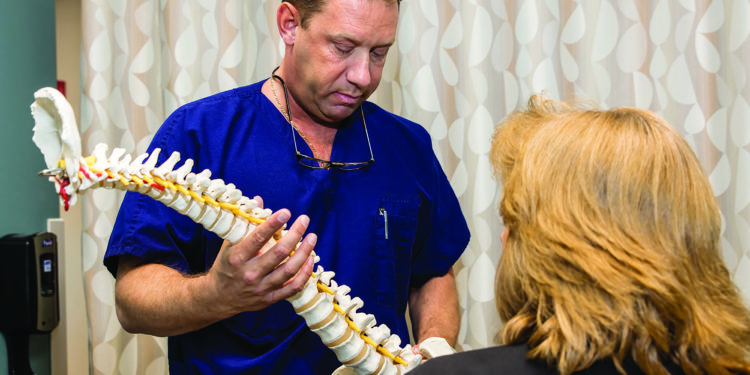
Story by Ann E. Butenas
If you suffer from back pain, you are not alone. Back pain is one of the most common medical problems in the United States and will affect many of us at some point in our lives.
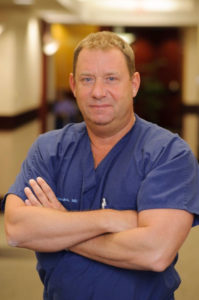 Some folks have jokingly noted back pain is evidence of youth leaving the body. That may very well be true, and as we age, we can notice an increase in the prevalence of back pain. However, back pain can strike anyone at any time and for a variety of reasons.
Some folks have jokingly noted back pain is evidence of youth leaving the body. That may very well be true, and as we age, we can notice an increase in the prevalence of back pain. However, back pain can strike anyone at any time and for a variety of reasons.
Dr. C. Lan Fotopoulos, with Kansas City Orthopedic Alliance in Leawood, Kansas, is Board Certified in Physical Medicine & Rehabilitation, Pain Medicine, Sports Medicine, and Undersea & Hyperbaric Medicine. As part of an elite group of orthopedic physicians whose contribution to the field of orthopedic medicine involves personalized care across all subspecialties in orthopedic medicine using state-of-the-art technologies coupled with the best in patient care, Dr. Fotopoulos is well-acquainted with the causes of back pain and available treatment options.
“The number one reason people call a doctor is for the common cold,” noted Dr. Fotopoulos.
“The number two reason is for back pain.”
Potential Causes of Back Pain
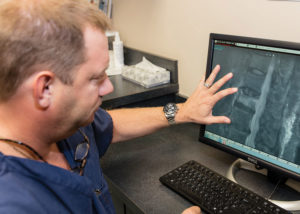 “There are innumerable causes for back pain,” explained Dr. Fotopoulos. “It can arise from kidney stones, pancreatitis, bone cancer, bladder cancer, gynecological issues, heart disease, and even different pulmonary issues, among other things.”
“There are innumerable causes for back pain,” explained Dr. Fotopoulos. “It can arise from kidney stones, pancreatitis, bone cancer, bladder cancer, gynecological issues, heart disease, and even different pulmonary issues, among other things.”
Dr. Fotopoulos indicated most of the time back pain is self-limiting. You can take an ibuprofen and rest on the couch for up to three days and then return to your normal routine. However, he did emphasize the one caveat to this approach is that bed rest beyond three days is deleterious and can cause more problems. These may include a reduction in muscle mass and in bone density, as well as potential impairment of other body systems.
“If your back pain is myofascial or muscular in nature, it could be related to posture,” stated Dr. Fotopoulos. “Good exercise can help prevent that type of back pain. For sciatic pain running down the leg, that can improve with time and exercise. Other causes of back pain can stem from disc bulges or herniated discus, and even from hip pain.”
Back pain can also be related to vertebral fractures, sacral fractures, previous back surgery, or spinal stenosis. According to Dr. Fotopoulos, these issues need to be teased out to determine the cause and to allow for more precision in treatment. On the upside, however, Dr. Fotopoulos indicated a lot of patients can get relief from the pain through lifestyle modifications.
“The problem today is that we have become chair-shaped, causing our core to become weak from sitting too much,” said Dr. Fotopoulos. “Back pain can also be the result of injuries, although this is not the most common cause of pain.”
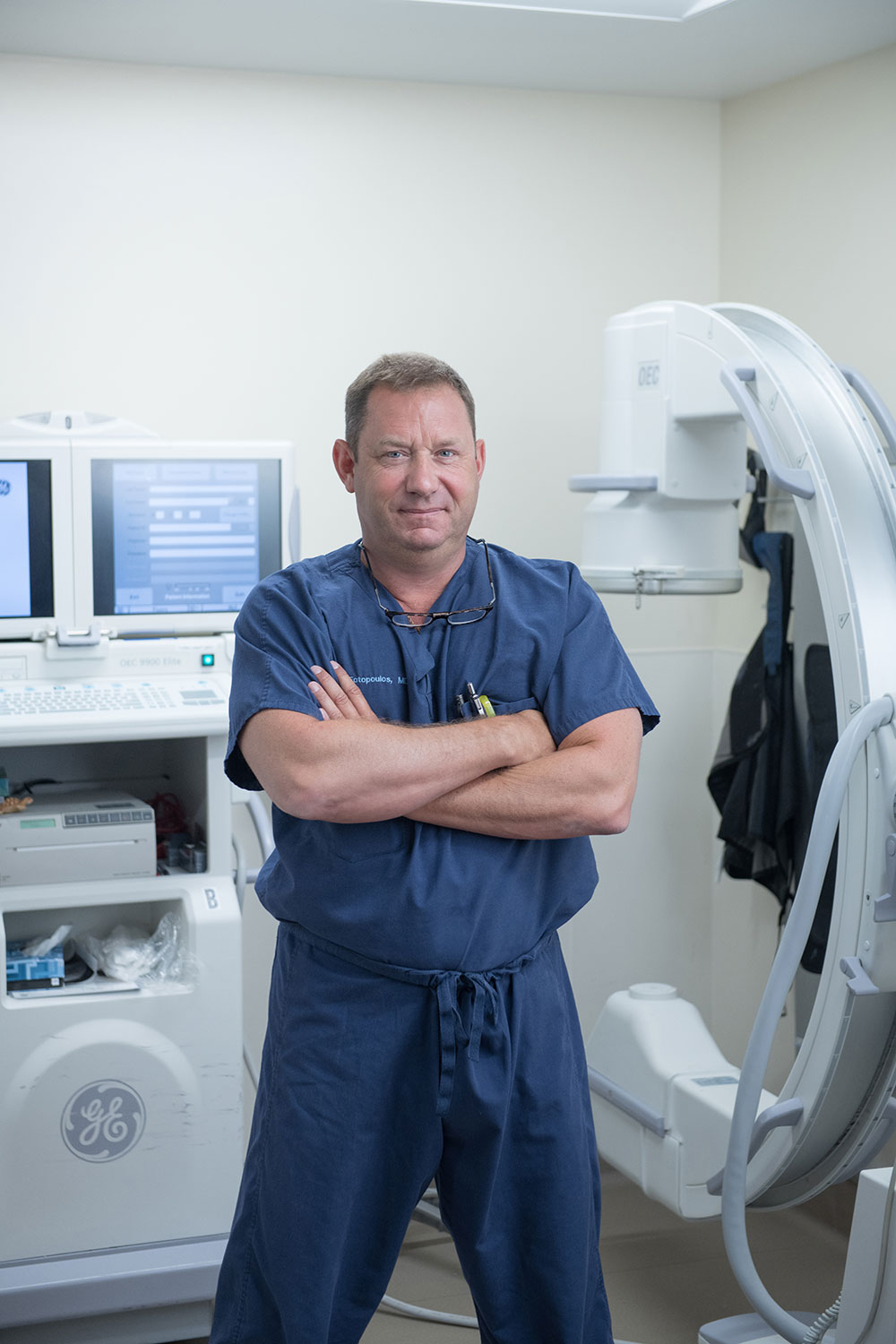
What about physical therapy for back pain? From a perspective of three years out, some patients may do just as well with this approach to sciatic pain, for example, as more involved procedures.
“Most patients tend to stay better as their activity increases,” explained Dr. Fotopoulos.
“Exercise 10-15 minutes a day. As you stretch and strengthen your body, the risk of pain diminishes.
If you have tight muscles from sitting in a chair too long, work it out while you feel better to prevent future issues. The key is to find the cause of the back pain, which allows for targeted treatment. You can also try three days of rest or contact your primary care provider or one who specializes in back pain.”
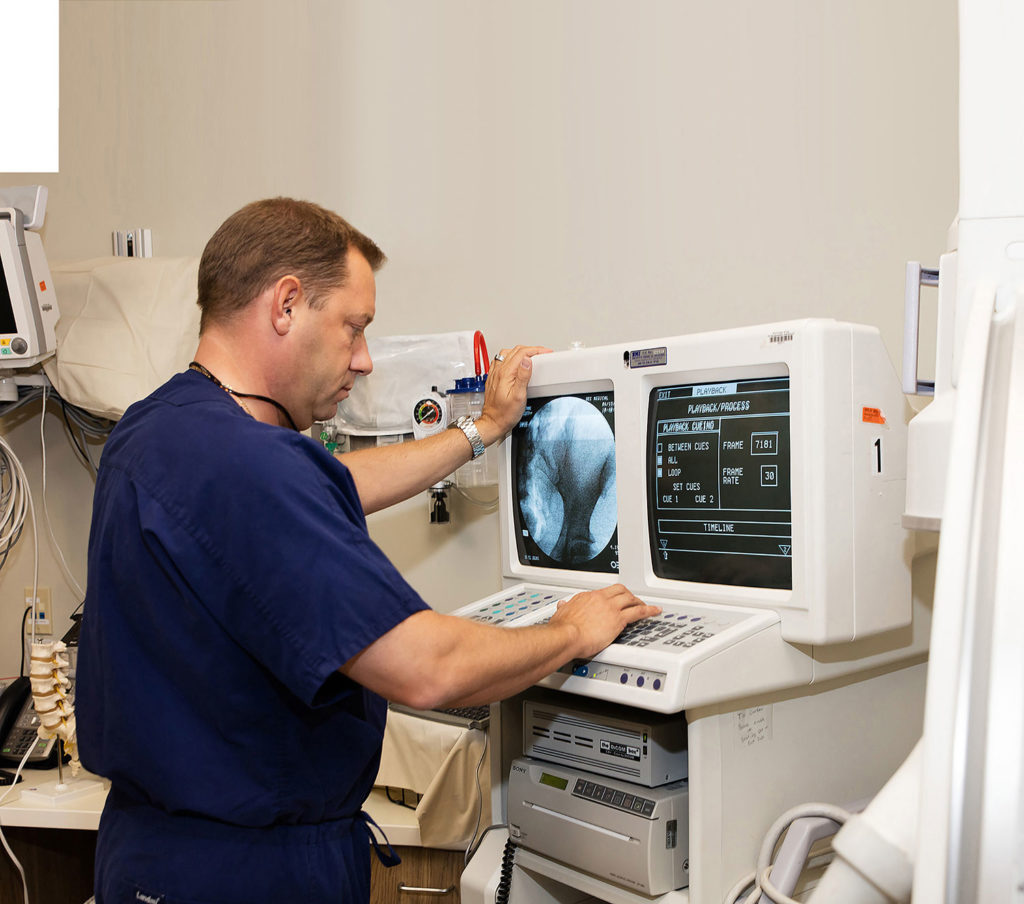 Back Pain Red Flags
Back Pain Red Flags
If you have any of the following symptoms, Dr. Fotopoulos stressed the importance of seeing a physician immediately. These include:
- Night sweats.
- Pain when lying down.
- Back pain presenting with a fever.
- Back pain in patients with a previous cancer history
In short, most back pain can be treated with rest, warm moist heat, and non-steroidal medication, provided you do not have a heart issue or a bad stomach. If the pain extends beyond those three days, Dr. Fotopoulos encourages seeing your primary care physician or a specialist to determine the root cause and to identify proper treatment approaches. These approaches can include medications, physical therapy, epidural steroid injections, radiofrequency ablation, vertebroplasty for fractures, and surgery for stenosis.
“Most patients stay better as their activity increases,” emphasized Dr. Fotopoulos.
As with any medical issue, it is important to discuss it with your healthcare provider to determine the cause and the proper course of treatment.

For more information on Dr. Fotopoulos and on Kansas City Orthopedic Alliance, go online at kcorthoalliance.com or call 913.319.7600.






